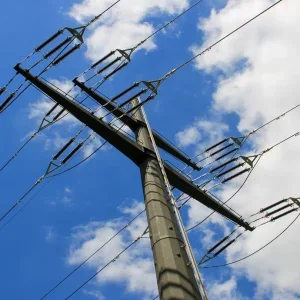
As the global demand for energy continues to rise, the energy industry faces mounting scrutiny over its environmental impact. Among the most pressing issues is the loss of biodiversity and the potential for ecosystem collapse. Biodiversity, the variety of life on Earth, plays a critical role in maintaining ecosystem health and stability. This article delves into how the energy sector contributes to biodiversity loss, the consequences of ecosystem collapse, and what the industry can do to mitigate these impacts.
Understanding Biodiversity and Its Importance
Biodiversity encompasses the diversity of genes, species, and ecosystems that make up the natural world. It is essential for ecosystem services such as pollination, water purification, climate regulation, and soil fertility. These services are crucial not only for environmental health but also for human survival and economic activities.
Energy Industry’s Role in Biodiversity Loss
The energy sector, including fossil fuels, renewable energy, and bioenergy, significantly impacts biodiversity. These impacts occur through various pathways, including habitat destruction, pollution, and climate change.
Fossil Fuels and Habitat Destruction
- Oil and Gas Extraction: Exploration and extraction of oil and gas often involve significant land disruption. For instance, in the Amazon rainforest, oil extraction has led to deforestation and pollution, threatening indigenous species and local communities.
- Coal Mining: Surface mining techniques such as mountaintop removal devastate large areas, destroying habitats and altering landscapes. This leads to a loss of plant and animal species, many of which are endemic and cannot survive outside their specific habitats.
Pollution and Its Effects
- Oil Spills: Catastrophic events like the Deepwater Horizon spill highlight the severe impact of oil spills on marine and coastal ecosystems. These spills result in immediate and long-term damage to marine life, from plankton to large marine mammals.
- Air and Water Pollution: Emissions from coal plants and oil refineries release harmful pollutants into the air and water, affecting both terrestrial and aquatic ecosystems. Acid rain, a byproduct of air pollution, alters soil and water pH, negatively impacting plant and animal life.
Climate Change
The burning of fossil fuels is the primary driver of climate change, which poses a significant threat to biodiversity. Rising temperatures, changing precipitation patterns, and increased frequency of extreme weather events alter habitats and migration patterns, often faster than species can adapt. Coral reefs, for example, are highly sensitive to temperature changes, leading to widespread bleaching and loss of marine biodiversity.
Renewable Energy: A Double-Edged Sword
While renewable energy is often touted as an environmentally friendly alternative, it is not without its own impacts on biodiversity.
Wind Energy
- Bird and Bat Mortality: Wind turbines, particularly those located along migratory routes, can lead to high mortality rates for birds and bats. Strategies such as careful site selection and technological innovations like radar detection systems are crucial to mitigating these impacts.
Solar Energy
- Land Use: Large-scale solar farms require significant land, which can lead to habitat loss and fragmentation. Desert ecosystems, often targeted for solar installations, are home to unique species that are highly adapted to these environments and vulnerable to disturbance.
Hydropower
- Aquatic Ecosystems: Dams and reservoirs alter river ecosystems, affecting fish populations and other aquatic species. Migratory fish, such as salmon, are particularly impacted as dams block their natural migration routes, leading to population declines.
Bioenergy and Land Use Conflicts
Bioenergy, derived from biomass, is another alternative with complex implications for biodiversity. The cultivation of bioenergy crops can lead to deforestation and habitat conversion, especially in tropical regions where biodiversity is highest. Moreover, the use of agricultural land for bioenergy can compete with food production, leading to further environmental degradation.
Ecosystem Collapse: A Real Threat
The loss of biodiversity can lead to ecosystem collapse, where ecosystems lose their ability to function and provide services. This can have dire consequences for the energy industry and society at large.
Forests and Carbon Sequestration
Forests act as carbon sinks, absorbing carbon dioxide from the atmosphere. Deforestation and forest degradation reduce this capacity, exacerbating climate change and creating a feedback loop that further threatens biodiversity.
Marine Ecosystems and Fisheries
Healthy marine ecosystems are vital for fisheries, which millions of people rely on for food and livelihoods. Overfishing, combined with habitat destruction from oil spills and climate change-induced ocean acidification, can lead to the collapse of fish populations, affecting food security and economic stability.
Pollination and Agriculture
Many crops depend on pollinators such as bees and butterflies. The decline in pollinator populations due to habitat loss and pesticide use can severely impact agricultural productivity, leading to higher food prices and reduced food availability.
Mitigation Strategies for the Energy Industry
To address biodiversity loss and prevent ecosystem collapse, the energy industry must adopt comprehensive mitigation strategies.
Environmental Impact Assessments
Conducting thorough environmental impact assessments (EIAs) before initiating projects can help identify potential impacts on biodiversity and develop strategies to avoid or minimise these impacts. This includes selecting sites with lower ecological value and implementing measures to restore habitats post-construction.
Investment in Green Technologies
Investing in technologies that reduce environmental impact is crucial. For example, floating solar panels on reservoirs can reduce land use conflicts, and advanced wind turbine designs can minimise wildlife mortality.
Policy and Regulation
Governments play a critical role in enforcing environmental regulations and incentivising sustainable practices. Policies that promote habitat conservation, pollution control, and sustainable land use can significantly mitigate the energy industry’s impact on biodiversity.
Corporate Responsibility and Sustainability
Energy companies must prioritise sustainability in their operations. This includes adopting best practices for biodiversity conservation, such as creating wildlife corridors, reducing emissions, and engaging in reforestation projects.
Collaboration and Partnerships
Collaboration with conservation organisations, local communities, and other stakeholders is essential for successful biodiversity conservation. Partnerships can lead to innovative solutions and shared responsibilities in protecting ecosystems.
Conclusion
The energy industry’s impact on biodiversity and ecosystems is a critical issue that demands immediate and sustained action. By recognising the importance of biodiversity and implementing effective mitigation strategies, the energy sector can play a pivotal role in preserving the natural world. This not only ensures the health of our planet but also secures the long-term viability of the energy industry itself. Sustainable practices, technological innovation, and robust regulatory frameworks are essential to harmonise energy production with the imperative of biodiversity conservation.






